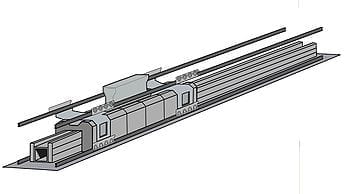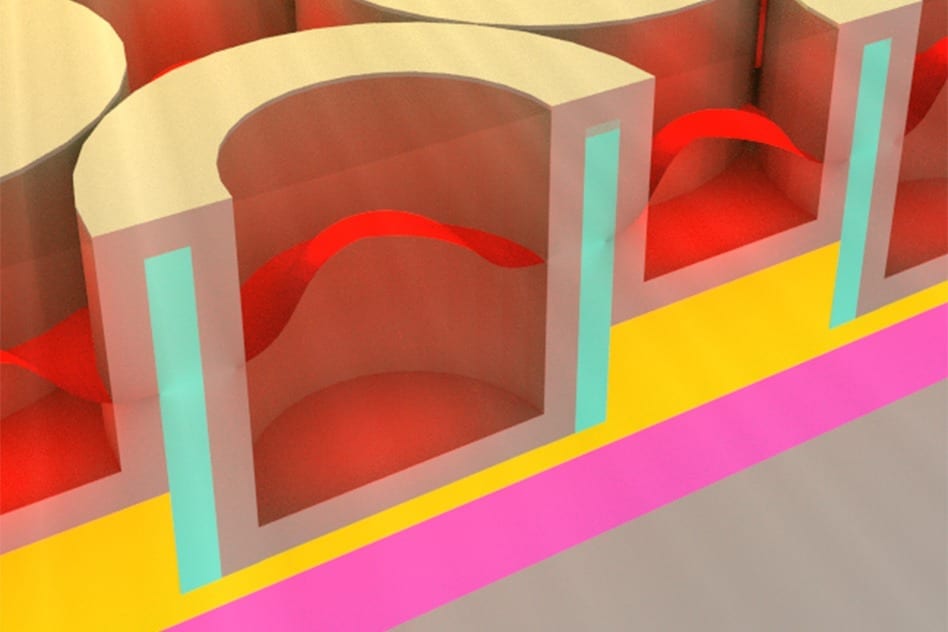
Catapulting ahead
AS A jet fighter screams away from the deck of an aircraft-carrier a swirl of vapour trails from the steam-driven catapult that launched it into the air. Catapults are an ancient technology, developed from the crossbow for increased range and firepower. By the Middle Ages, they could hurl rocks as big as 75kg (170 pounds) to batter castle walls. From using the kinetic energy stored in twisted ropes and sinews to launch projectiles, catapults were developed using hydraulics, gravity and air as propellants. Steam became a favourite with naval architects because it was on tap, generated by the engines of ships. Now catapults are going electronic and finding new military and civilian roles.
Despite their punch, the steam-driven catapults on aircraft-carriers are not as powerful as some would like. Even with their engines roaring, catapulted aircraft still need the extra airspeed provided by turning the carrier into a headwind. If there is no wind, you must “crank the ship up” to generate one by sailing faster, says a retired commander of a US Navy warship.
The US Navy is so impressed with the push delivered by its new catapult, the Electromagnetic Aircraft Launch System (EMALS), that its next aircraft-carrier, the Gerald R. Ford, is in effect being built around it, says Captain James Donnelly, manager of the launcher. EMALS can accelerate a heavy warplane to 180 knots (333kph)—about 30 knots faster than a steam catapult. As the acceleration can be finely adjusted every millisecond, it produces smoother launches, which are better for pilots and aircraft.
The system is being fine-tuned by General Atomics, a defence contractor, at an airfield in Lakehurst, New Jersey. Just under the runway lies a nearly 100-metre array of electromagnets straddled by a sliding, conductive armature. Precisely timed pulses of electricity create a wave of magnetism which rapidly pushes the armature along. The armature is connected to a shuttle on the runway above, to which the aircraft’s nose wheel is hitched.
The technology is similar to the linear-induction motors employed in some high-speed trains—except, of course, trains are not expected to take off. The Lakehurst system can propel the shuttle to the other end of the runway in just 2.4 seconds, says Mike Doyle, the programme’s chief technology officer. But it takes a lot of energy, more even than a nuclear-powered aircraft-carrier can suddenly muster. Hence energy is stored kinetically in rapidly spinning rotors and released to power generators whenever the catapult is fired.
Such kit is not cheap. The four-catapult system for the Gerald R. Ford has a price tag of some $750m. But it eliminates all the tentacular plumbing of steam catapults and should cut crewing and upkeep expenses by about $250m over its expected 50-year life, the retired commander estimates. Being much lighter it will also make the aircraft-carrier more stable, manoeuvrable and cheaper to propel.
EMALS is costly partly because it has to be squeezed into the confines of an aircraft-carrier. Building such a system on land would be much cheaper. This leads some to wonder whether catapults could be used to cut the costs of commercial flying. The engines on airliners guzzle fuel on take-off. Scott Forney, head of General Atomics’ electromagnetics business, says that he has been approached by cargo airlines considering this. But could it be used to launch passenger aircraft too?
The Latest on: Electromagnetic launcher
[google_news title=”” keyword=”Electromagnetic launcher” num_posts=”10″ blurb_length=”0″ show_thumb=”left”]
via Google News
The Latest on: Electromagnetic launcher
- The Best Brotherhood Of Steel Ranks In Fallout 4on April 26, 2024 at 5:45 am
Becoming a Knight may lead to better perks, traders, and Power Armor within the Brotherhood. Progressing to Paladin involves lengthy quests like Show No Mercy and Blind Betrayal, but leads to unique ...
- The Army Has Officially Deployed Laser Weapons Overseas to Combat Enemy Droneson April 24, 2024 at 5:03 pm
A pair of laser weapons has been deployed by the Army to an undisclosed location overseas to blast incoming enemy drones out of the sky.
- Russia ‘moves nuclear missile launchers to Finland border’on April 24, 2024 at 3:33 am
The move was called a 'timely and adequate response' to Finland joining Nato, in the Kremlin's latest nuclear threat against the West ...
- What Is Iskander-M? Russia's Nuclear-Capable Launchers Head for NATO Borderon April 22, 2024 at 5:52 am
The missile system is part of the expansion of the Leningrad Military District formed after Finland joined the alliance.
- National Defence Strategy: preparing slowly to strike faron April 22, 2024 at 12:21 am
National Defence Strategy (NDS) reiterates the importance of a strategy of deterrence by denial suggested in the 2023 Defence Strategic Review. It also reiterates air, sea and land capability ...
- European Space Agency set to launch probes at asteroid to test planetary defense systemon April 18, 2024 at 10:54 am
The Hera mission will study the Dimorphos asteroid that was pushed off course by NASA’s DART spacecraft in 2022 ...
- Israel and US testing microwave and laser weapons - reporton April 17, 2024 at 9:32 pm
The US and Israel are now testing microwave and laser weapon systems to combat drones that are being developed by private companies, "The Wall Street Journal" reports. The advantage of these armaments ...
via Bing News









